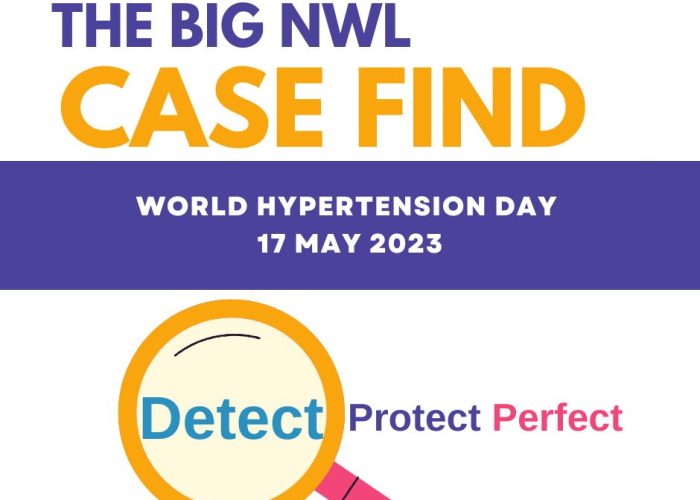 Andi Orlowski Head of Business Intelligence, explains how ICHP’s advanced work on population health helps partners truly understand their local communities.
Andi Orlowski Head of Business Intelligence, explains how ICHP’s advanced work on population health helps partners truly understand their local communities.
Understanding a local population is crucial for anyone working in an integrated care system, planning new interventions or new care models, or looking for the best ways to close the gap on health inequalities – and that’s where population health analysis comes in.
There are several types of ‘standard’ analysis that people expect to see – such as risk stratification and segmentation, which help give a detailed picture of the health and wellbeing of communities and the challenges that different groups face – but ICHP also offers some added ‘extras’ that build on these including, maybe most importantly, impactibility analyses.
How will this intervention have a positive impact on patient care?
The idea of these impactibility analyses is to look in more detail at the ways in which services engage or work with local people, to find any gaps in care or unwarranted variations that need to be addressed, and to investigate the most effective practical changes that could really make a difference. This is where our team really comes into its own, because a crucial question we ask ourselves at the beginning of each project is, ‘how will this intervention have a positive impact on patient care?’.
Most of our support in this area is delivered to sustainability and transformation partnerships and integrated care systems, which have a mandate to be proactive about population health. As a first step, we use risk stratification and segmentation to help them better understand their local population, then we move on to the impactibility analyses, where we investigate which segments highlighted in the previous analysis are most amenable to change.
Identifying which patients are most likely to be amenable to intervention is a key step. Gap analysis enables us to identify and focus on patient care that may have missing elements or ‘gaps’ in care delivery. For example, we could use gap analysis to look at the diabetes treatment pathway, using NICE as the example of best practice (or another pathway chosen by the locality). The first step on the pathway may be education followed by dietary advice and then blood glucose management with insulin-based treatments. We look for individuals who may not have followed that pathway and identify where it may be appropriate to offer them the missing intervention. Was each patient offered dietary advice? Did the patient receive a dipeptidyl peptidase-4 (DPP-4) inhibitor before metformin when metformin would have been appropriate?
Predictive analytics or risk scores
Understanding the variation in the population and clinical and social care outcomes is also important. Where there are differences, we work with our partners to understand why. To do this we can compare the data with peer-matched populations defined by Public Health England, NHS Rightcare or locally, to better understand the variation. We can also use statistical process controls (SPC) and historical population data to see whether changes really are influenceable.
Predictive analytics or risk scores (e.g. CHA2DS2-VASc to indicate the risk of an atrial fibrillation (AF) related stroke) also play a role to in helping to predict individuals who are at high risk of developing disease or suffering an adverse event (e.g. HAS-BLED score for treatment of anticoagulants for those with AF). We can also look for patients that have received duplication in their care, such as undergoing multiple tests for the same condition within a set period of time or being given medication that could be rationalised or improved.
We can then turn our attention to the proposed intervention to ensure that it is appropriate for the population highlighted in the outlined opportunity. A literature and case study review can determine whether the intervention was used previously in a similar population. If it was, we look at the outputs and outcomes observed and therefore understand what we could expect to see. The review can also help us understand how the intervention might translate to the identified target population.
By understanding the potential outputs and outcomes we can support the implementation of a new intervention and carry out a series of evaluations to check whether the change being made is making a difference. We also carry out a health equality impact assessment to ensure that we’re not inadvertently reinforcing health inequalities in a community.
Create a learning health system
With some issues in population health, changes could be a decade in the coming, so in these cases we can use what we call ‘lead markers’. For example, if avoiding a stroke is the outcome, we can use the provision of anticoagulation medication to patients (a preventative treatment) as a surrogate lead marker for the outcome (a reduction in strokes). This means we’re not measuring an actual reduction in strokes, but we are measuring the steps we’re taking to deliver that outcome. It’s a bit like counting each mile as an achievement as you run a marathon.
To do this we create a learning health system or a PDSA cycle (plan, do, study, act) and continually iterate the intervention to ensure it’s going the way it should be to achieve the right outcome.
Population health doesn’t change overnight, and I personally thrive on delivering support that helps organisations work over time to deliver a positive patient impact and long term improvements to health and wellbeing.



